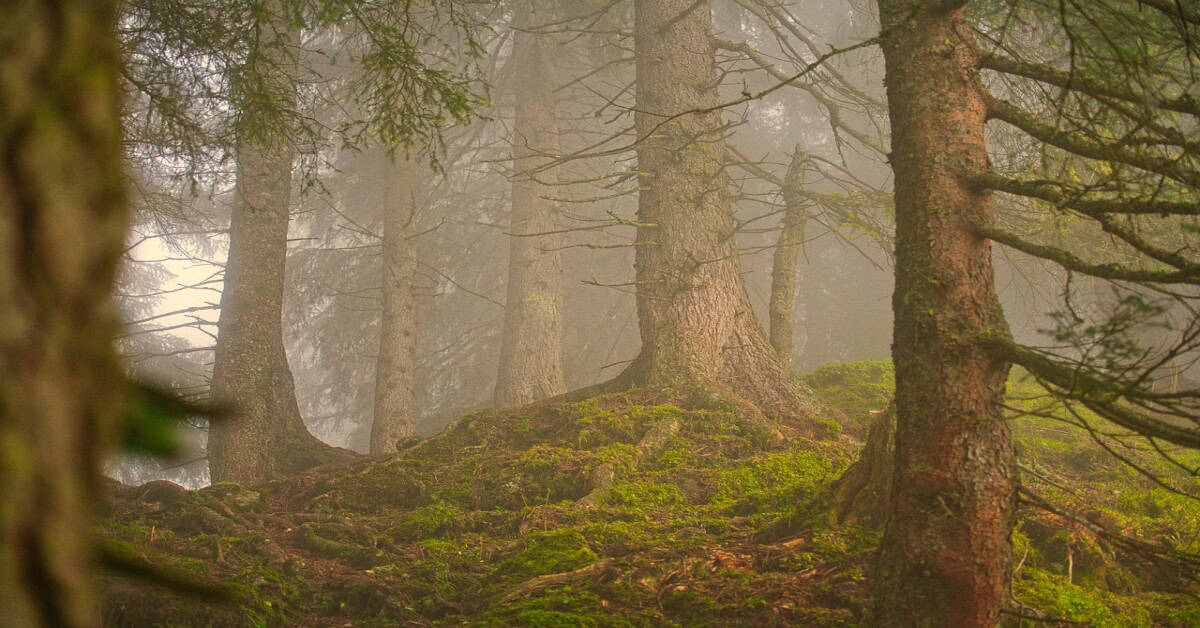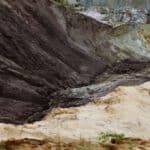Forests play a crucial role in maintaining the Earth’s ecological balance. They provide oxygen, support wildlife, and regulate climate. However, one of their most important functions is protecting the soil from erosion.
Without forests, soil can easily wash away during rainstorms or be blown away by the wind. This leads to poor soil health and environmental damage. But do forests protect the soil from erosion, true or false? The answer is true, and this blog will explore why.
Forests prevent soil erosion by acting as natural barriers. Their roots stabilize the ground, while their canopy reduces the impact of rainfall.
In this post, we will look at how forests and soil erosion control are linked. We’ll explain the vital role forests play in keeping soil stable and healthy.
What is Soil Erosion?
Soil erosion is the process where soil is worn away by natural forces such as water and wind. It can also happen due to human natural processes and activities like farming, construction, and deforestation.
When the top layer of soil is removed, it leaves the land bare and exposed. This makes it difficult for plants to grow, and over time, the soil loses its nutrients.
Soil erosion is a major environmental concern because it affects food production and water quality. As fertile soil is lost, farms struggle to grow crops. Additionally, erosion leads to sediment buildup in rivers and lakes, which can harm aquatic life.
Therefore, soil erosion threatens not just the land but also ecosystems that rely on healthy soil.
Natural systems like forests play a vital role in controlling soil erosion. Forests act as shields, protecting the soil from harsh weather and runoff. By keeping the soil in place, they help maintain its health and structure, preventing it from washing or blowing away.

How Do Forests Prevent Soil Erosion?
Forests are one of nature’s best defenses against soil erosion. They help keep soil in place and protect it from being carried away by wind or water. Their dense cover acts as a buffer, reducing the force of natural elements that cause erosion.
One of the key ways forests prevent soil erosion is through their root systems. Tree roots create a network that holds the soil tightly together. This prevents the soil from loosening, especially during heavy rainfall or strong winds. By keeping the soil in place, the risk of erosion is greatly reduced.
Another important feature of forests is their canopy. The leaves and branches of trees form a cover that lessens the impact of rainfall on the ground. Instead of hitting the soil directly, rainwater is slowed down as it passes through the leaves. This helps reduce surface runoff, which can wash away the soil.
In addition to roots and canopies, forests also contribute organic matter that enriches the soil. Fallen leaves, branches, and other forest litter help create a layer on the ground that protects the soil. This layer improves the soil’s structure and absorbs water, further reducing erosion.
Also Read: Harmful Consequences of Forest Fires
The Role of Forests in Erosion Control
Forests play a crucial role in erosion control by providing natural defenses against soil loss. The complex ecosystem of a forest protects the soil in several ways:
Root Systems: Tree roots are vital for holding soil in place. These roots spread deep and wide, creating a strong network that stabilizes the soil.
When rain falls, the roots absorb much of the water, preventing excess runoff that would wash soil away. This is especially important in areas with steep slopes, where erosion risks are higher.
Canopy Cover: The canopy of a forest acts like a shield, protecting the ground from direct rainfall and strong winds. Rainwater that falls on trees is slowed down by the leaves and branches before reaching the soil. This reduced impact prevents the soil from being splashed and carried away by heavy water runoff.
Furthermore, the canopy also reduces wind erosion by breaking the force of strong winds before they hit the ground.
Biodiversity: Forests are rich in plant life, and this biodiversity strengthens soil protection. Different plants grow at various heights and spread across the forest floor, creating layers that shield the soil.
This diversity ensures that the ground remains covered, which helps prevent erosion caused by both water and wind.
Research has shown that forest ecosystems are highly effective in controlling soil erosion. For example, a study by the International Union for Conservation of Nature (IUCN) highlighted how forests reduced soil loss in mountainous areas by up to 50%. Furthermore, real-world conservation efforts, like those in the Amazon rainforest, have proven successful in reducing erosion by preserving large forested areas.
Are Forest Areas Less Prone to Soil Erosions?
When asking, Do forest protect the soil from erosion? the answer is clearly true. Forests play an essential role in preventing soil erosion through natural processes that keep the soil stable. Evidence from various studies confirms that areas covered in forests experience much less erosion compared to those that are deforested.
For example, in deforested regions, rainwater runs quickly over bare soil, washing it away and causing serious damage. However, in forested areas, tree roots and forest floor litter absorb much of the water, reducing runoff and erosion. This demonstrates how essential forests are in keeping soil in place.
There are some misconceptions, though. Some people believe that soil erosion is a natural process that occurs even in forested areas. While it’s true that erosion can happen anywhere, it is far less severe in regions where forests exist. Deforestation, on the other hand, leads to rapid soil degradation, making erosion much worse.
Forests indeed protect the soil from erosion. By stabilizing the ground with roots, slowing down rainwater, and providing natural cover, forests are critical in the fight against soil loss. The answer to the question is undeniably true.
Impact of Deforestation on Soil Erosion
Deforestation greatly increases the risk of soil erosion. When trees are removed, the soil loses its natural protection. Without roots to hold the soil together, it becomes loose and vulnerable.
Rainwater runs quickly over the bare ground, washing away large amounts of soil. Wind also has a greater impact, blowing away the top layer that is rich in nutrients.
The removal of tree cover directly impacts soil stability. The canopy that once slowed down rainfall is gone, allowing heavy rains to hit the soil directly. This not only leads to erosion but also worsens flooding. The soil becomes compacted, reducing its ability to absorb water, which further accelerates erosion.
Regions like Southeast Asia and the Amazon rainforest have experienced severe soil erosion due to deforestation. In places where forests have been cleared for agriculture, such as Madagascar, soil degradation has worsened, turning once fertile lands into barren wastelands. These cases show the direct link between deforestation and soil erosion.
The Importance of Forest Conservation for Erosion Control
Conserving forests is key to preventing soil erosion. Forests provide natural barriers that protect soil from being washed or blown away. Tree roots keep the soil in place, while the canopy reduces the impact of rain. Without forests, soil erosion can destroy landscapes and harm ecosystems.
Many countries have recognized this and are working to conserve forests. Global efforts like the United Nations’ REDD+ program aim to reduce deforestation, especially in tropical regions.
These policies are making a positive impact by helping protect forests and prevent erosion. Reforestation projects also restore degraded lands, improving soil stability over time.
Supporting forest conservation is essential to solving the problem of soil erosion. By protecting forests, we also protect the soil and ensure that it remains healthy for future generations.
Conclusion
Forests play a vital role in maintaining healthy ecosystems, especially in controlling soil erosion. They protect the soil through deep root systems, canopy cover, and biodiversity, all of which help stabilize and preserve the land.
Without forests, soil erosion increases, leading to significant environmental damage such as poor crop production and loss of biodiversity.
Preserving forests is not just about saving trees; it’s about protecting the entire ecosystem. Healthy forests prevent soil erosion, improve water quality, and support countless species. The long-term benefits of forest conservation far outweigh the short-term gains of deforestation.
As we continue to face environmental challenges, it is essential to protect and restore forested areas. Safeguarding our forests will ensure a healthier planet for future generations while protecting valuable soil and ecosystems today.








